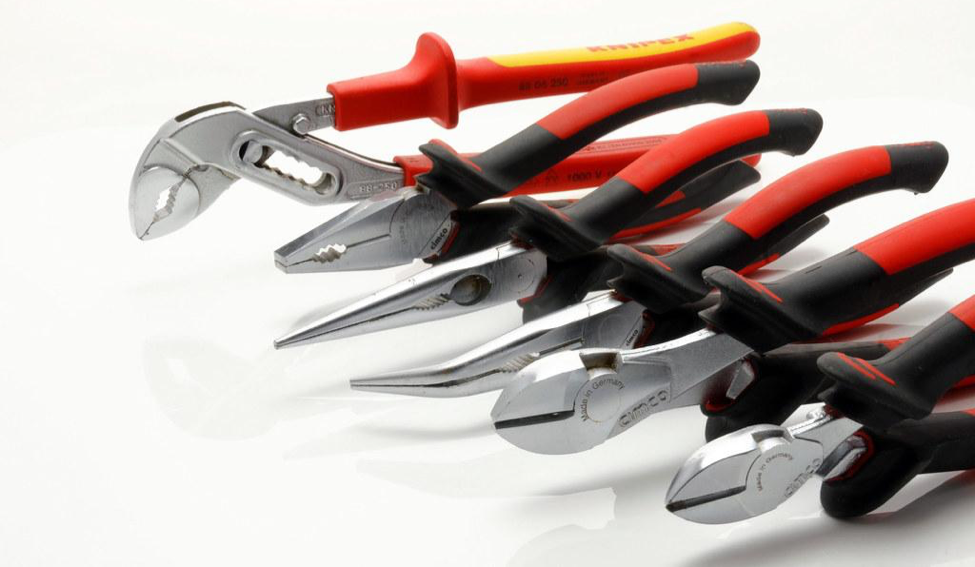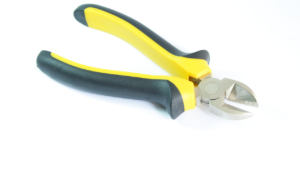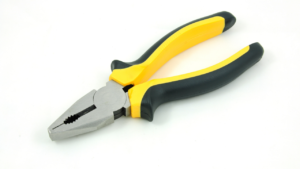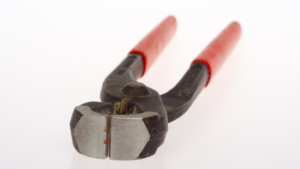Pliers are a staple in any tool kit lying in the garage or tool shed. It comes in handy whenever working with any repairs for appliances in the household or other small jobs. However, not many are aware that this tool has multiple other uses, with each suited for a different purpose. If you are someone with limited knowledge of repair equipment, you are in the right place.
Pliers are used by beginners and veterans alike for different purposes. As a result, they have variations in their size, type, design, and much more! Now, as with all equipment, pliers should be handled in a certain way. This article will help shine a light on some do’s and don’ts of using pliers for your safety.
Table of Contents
What Are Pliers Used For
Pliers are a common hand-held tool found in homes that can be used for many different purposes. There are several different types of pliers that can be used for gripping something round like a pipe or rod, twisting wires, or even cutting wire.
According to Wikipedia, “pliers consist of a pair of metal first-class levers joined at a fulcrum positioned closer to one end of the levers, creating short jaws on one side of the fulcrum, and longer handles on the other side.”

Pliers have been around since ancient times and no single source of origin can be found. The oldest illustration of pliers was of the Greek god Hephaestus in his forge.
Different Types of Pliers
There are seven types of pliers:
Side Cutting Pliers
These are used for electric work and are mainly used to cut wires and strip insulation. These are also called wirecutters.
Longnose Pliers
These are used to catch hold of objects firmly, hold wiring, and bend or attach them as well. These are commonly called needlenose pliers.
Utility Pliers
These are used to grip different shaped objects whether they are round, square, flat, or hexagonal.
Diagonal Cutting Pliers
These are used for cutting and removing nails, bolts, braces, and other fasteners.
Flat Nose Pliers
These are used mainly for assembly work and are used to twist and turn and bend wires.
Slip Joint Pliers
These are used for adjusting screws and pins.
End Cutting Pliers
These are used for various things such as cutting hard wires, corking in nails, and handling rivets.
How to Use Pliers
Pliers are fairly simple to use. Put whatever object you are trying to grip, cut, or twist between the open jaws. Gently squeeze the handles together with your hand to grip the object. If you are just trying to turn the object, rotate your hand to turn the object. If you are trying to cut the object, continue squeezing until the object is cut.
Pliers Safety Measures
The following are safety rules that you must abide by when using this type of instrument:
- These instruments are not fit to pierce through hard wires unless they have been modeled for that purpose.
- Do not put pliers under direct heat or near hot stuff, as their dimensions can change their utility or destroy them.
- Don’t implement pliers if you do not know how to cut at the right angles because doing so improperly will wear the tool quickly.
- If you have a light plier, then do not bend stiff wires with it. It can damage the plier.
- If the properties of a plier change, do not try to reshape it back to its original form using a hammer, as it can crack or break.
- Use larger pliers for a job when required instead of elongating the length of shorter ones.
- Do not use pliers on nuts and screws. A wrench is best suited for that function.
- Lubricate your pliers to increase their durability and prevent rust.
- Wear safety goggles and gloves to protect yourself from any harm that may come from using pliers.
- Do not cut hot wires using pliers.
Do’s
Follow through this list of do’s.
- Do your research and equip yourself with the right tools for the job.
- Train yourself to use your tools safely to avoid any injury to yourself.
- Inspect your ability with these hand tools before each use.
- Use tools that have been designed to keep the wrist straight.
- Always put the instruments in the assigned place or use a toolbox.
- Ensure high-grade insulation of these instruments.
- Ensure the sharpness of cutting tools by regularly sharpening them using the traditional methods.
- Do not point the sharp end of the tools towards yourself or at anyone else.
- Mushroom head tools should be secured before using them.
- Hammer nails by hitting the head of the nails.
- The holder of a hammer should be fitted tightly to the head so as not to detach under the high force during use.
- Only purchase pliers that meet the applicable standard.
- Use a toolbox to store your tools and carry it whenever required.
- Strap tools with a tool pouch so that they can be used when working remotely from where you store your other equipment.
- Adorn an appropriate outfit before performing any tasks with this tool. This includes gloves covering your hands, glasses to shield your eyes, hard hats, and the right shoes.
Don’Ts
Follow through this list of don’ts.
- Don’t use tools for purposes they have not been designed for, as it will wear the tool out.
- Don’t purchase low-quality tools to save money as it will affect the quality of the job.
- Don’t use faulty tools which have been cracked open or are broken.
- Don’t apply extreme force to these tools.
- Don’t lay your fingers near the sharp tip of the tools.
- Don’t aim towards yourself when using these tools.
- Don’t use an oily tool, as it can slip out of your hands and cause injury.
- Don’t pass tools by throwing them at a high velocity. It can injure the person trying to catch them.
- Don’t leave tools at the tip of a high platform when working at heights, as they can fall off and hurt someone.
- Don’t carry tools in your pocket that are sharp and can cut through clothing or poke you.
- Don’t forget to wear the appropriate gear before performing any task.
- Don’t remove gloves even when it is uncomfortable to wear them, as they can save your skin from harm.
- Do not cut rigid wires unless the pliers are built for this purpose.
Conclusion
Learning how to use hand tools is integral in using them the right way and safely. If they are used by applying the wrong methods, you can injure yourself gravely. It is best to keep the risk of wounding yourself at a minimum. It’s on no one’s wishlist to hurt themselves and then replace the tool and the appliance it was used on. Hopefully, this article will guide you in making the right choices when using this type of instrument and will help you get the job done.







